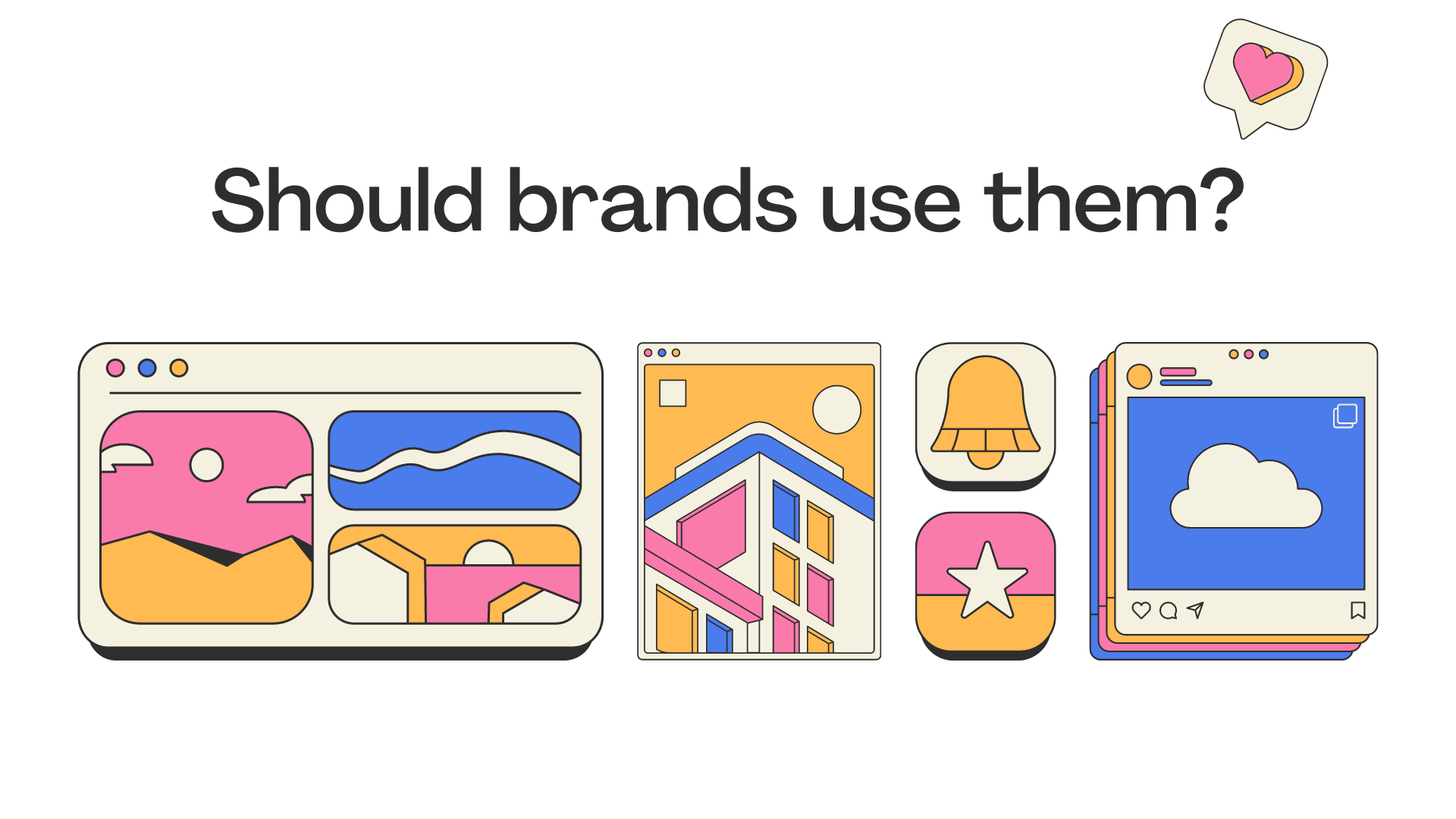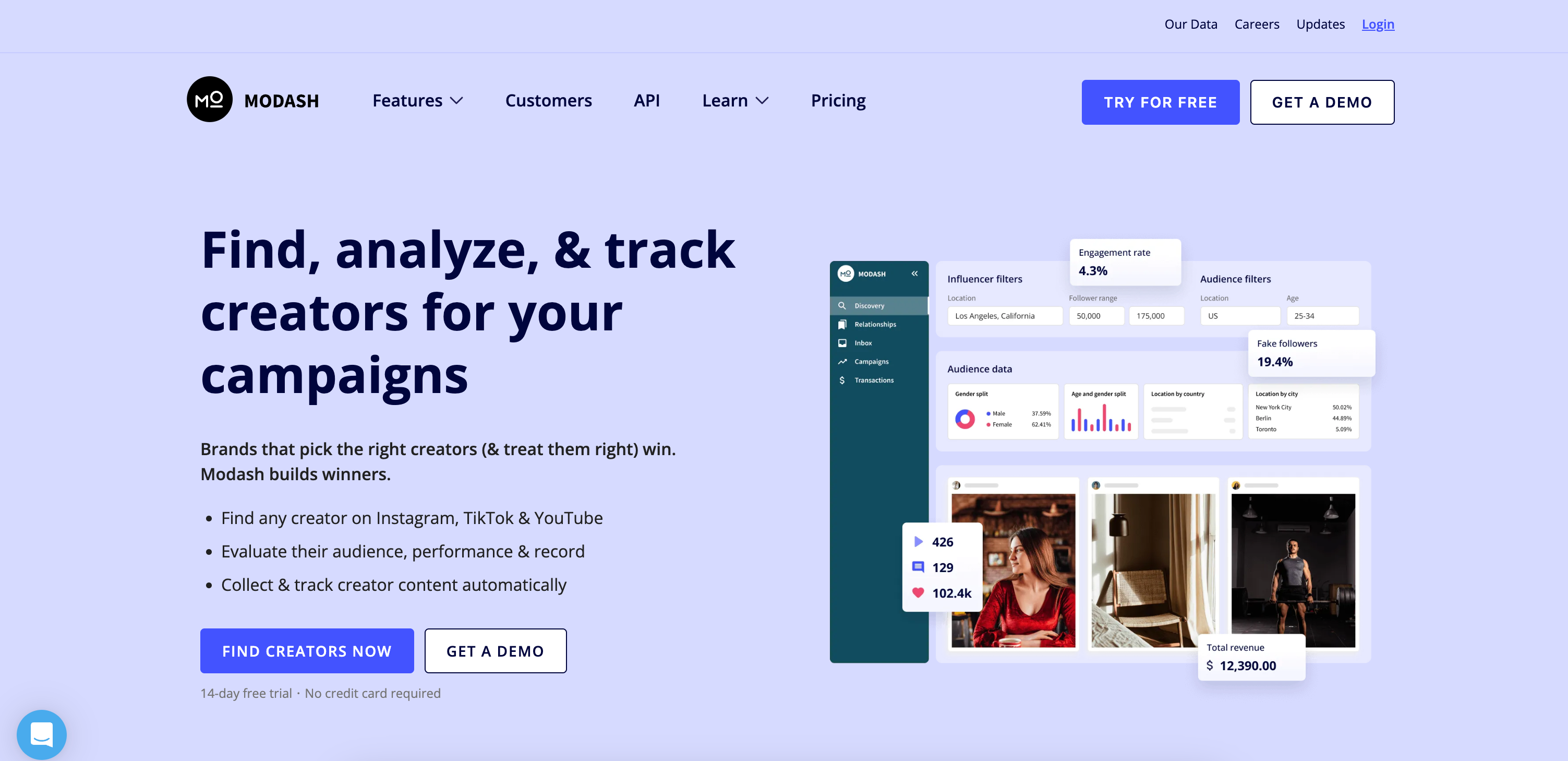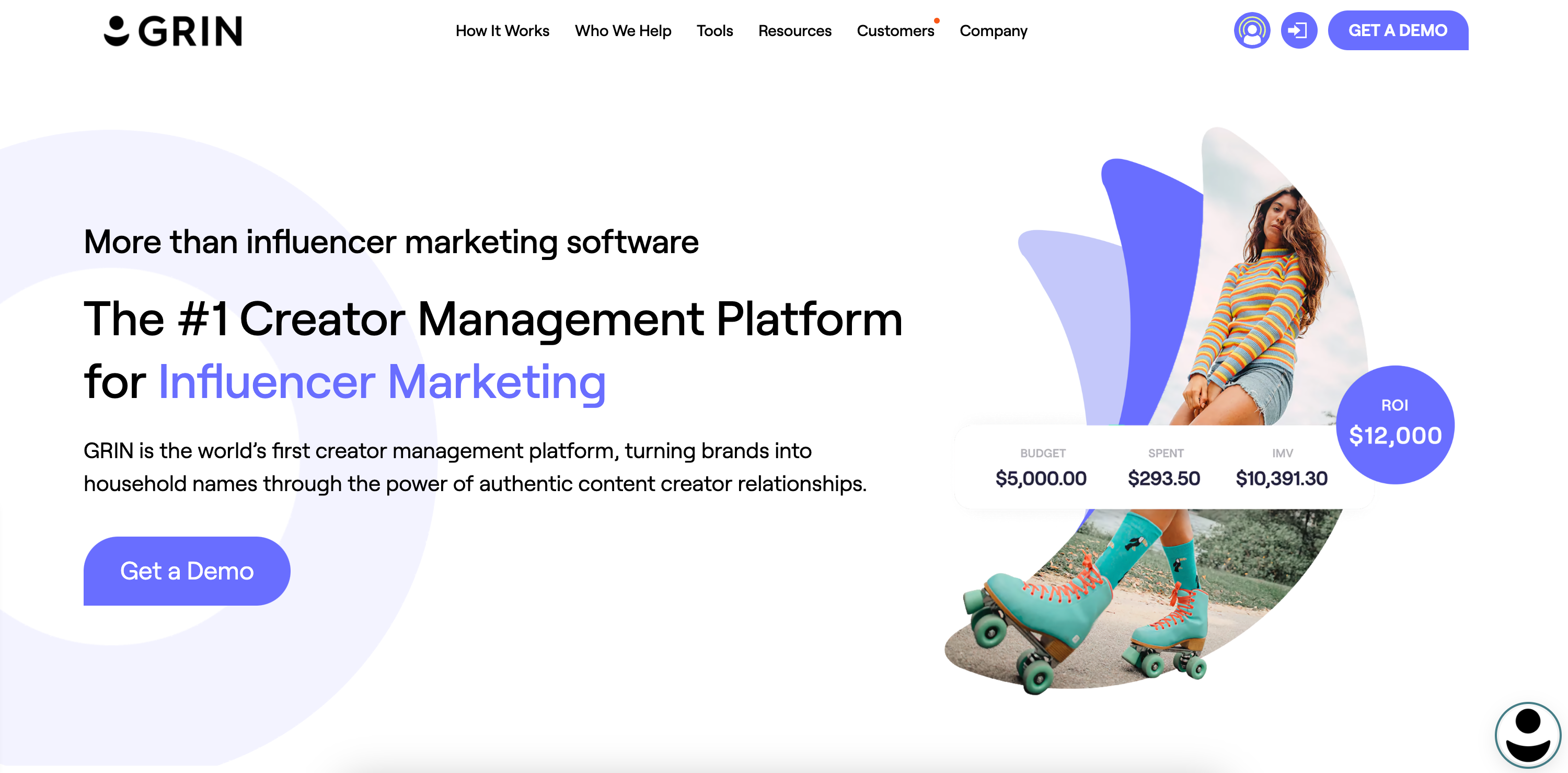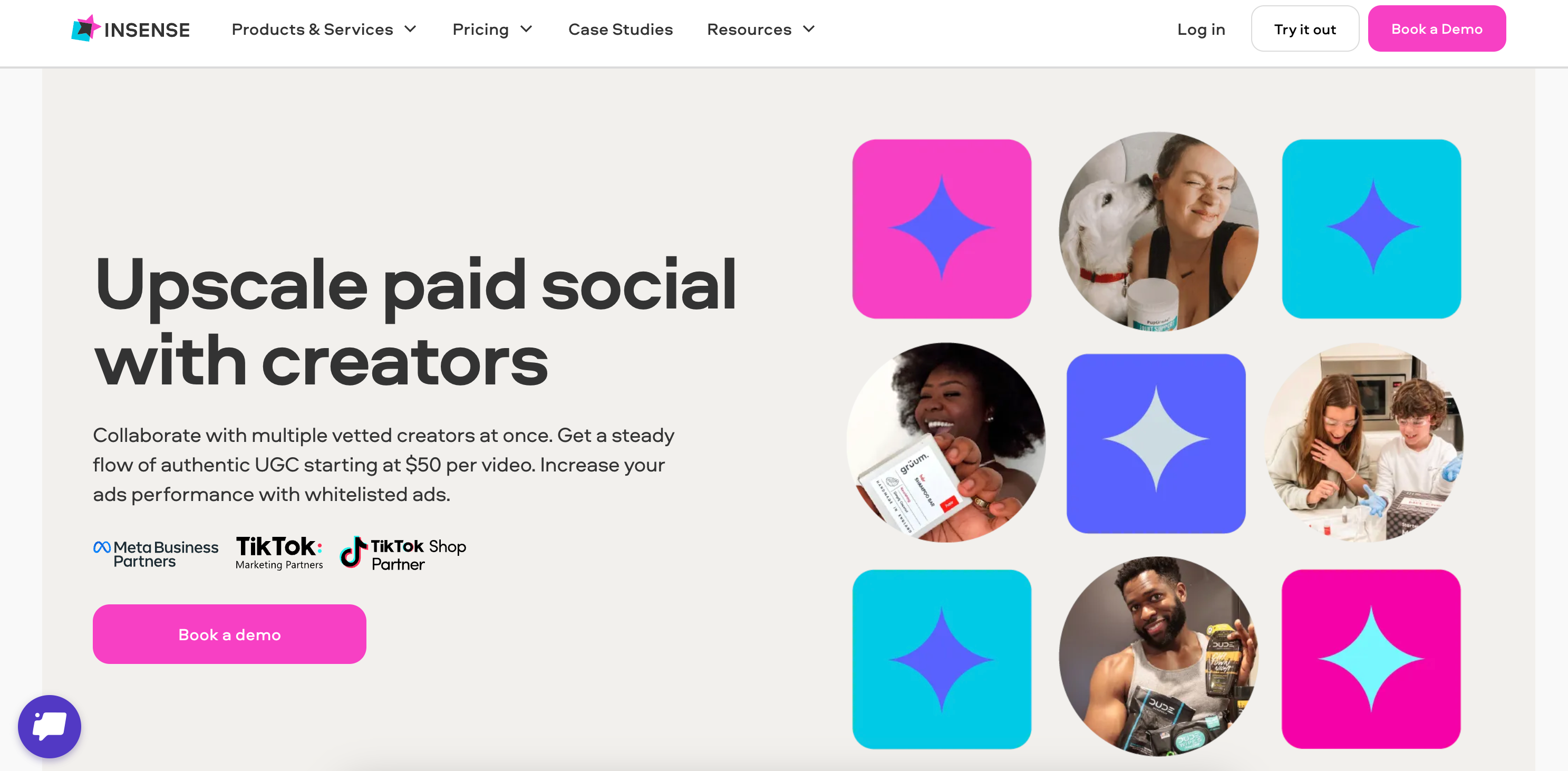Do you need an influencer database?
You might think that’s a rhetorical question. It’s not.
Here’s what I’ve noticed in 5+ years of working with UGC and influencer marketing:
Sometimes, brands rush to buy a product because everyone says that’s what you need when there are better, cheaper, and faster options on the market.
I don’t want that to happen to you, so in today’s article, we’ll talk about:
- Influencer databases- what they are, and whether or not you should use one.
- The top 3 influencer database options on the market.
- Alternatives to influencer databases (and don’t worry, I’m not *just* talking about Clip).
- My honest opinion on influencer databases for small to medium-sized brands.
I’ll help you consider it from several angles– and provide insights from my experience working with influencers and UGC creators.
Let’s get started!
What’s an influencer database?
An influencer database is a searchable collection of information on various influencers: TikTok influencers, Instagram influencers, YouTube influencers, etc.

Influencer databases (aka influencer platforms) import information from public sources, including metrics and contact details.
Their business model is simple: They build a database of influencers, and brands pay a big monthly fee to access these databases to search for and find influencers to contact. While this may seem pretty simple– after all, they’re just gathering information that’s publicly available– don’t dream about accessing an influencer database for free. They all come with hefty price tags.
You might be thinking, “Okay! I guess this is how I’m supposed to find influencers… So where can I sign up?”
But wait! Don’t hand over your credit card just yet. Keep reading- you might be surprised.
Should brands use influencer marketing databases?
This is a great question. Before we answer it, let’s think about your goals.

If you’re looking to create…
- Brand awareness
- Sales
- Direct engagement on your brand’s social media channels
- More followers
- Greater reach
… Then influencer marketing and influencer databases are a solid option.
If you want to use influencers to grow your brand awareness: go for it! That’s what they’re good at. You’ll want to search influencer databases to find influencers to promote your brand on social media.
However, if your brand is looking purely for UGC content, UGC platforms or even UGC agencies might be a better option.
Here’s why: If you know where to find them, UGC creators make the same or better-quality content than influencers– for way better prices. This is because they don’t have an audience to cater to or an image to maintain which obviously costs and adds up to what brands pay. They’re just sharing their experience with a brand they love. That authenticity resonates with people.
Sure, you can probably think of other reasons you might want to get UGC content instead of hiring an influencer– but authenticity is the main one. Building your brand with UGC eventually generates brand awareness, engagement, and even sales… But influencer marketing is a more direct (albeit more expensive) path to those things.
Now, you might be thinking: But if I work with influencers, can’t I just kill two birds with one stone to get UGC and influencer content?
And yes- you can do that. It’s more expensive, but if it’s worth it to you, it can be a smart option!
Your goals are an important thing to consider when you’re figuring out if subscribing to an influencer database is a good idea for your brand. There are other considerations, too- like pricing. And features. Let’s talk about those next.
What are the top 3 influencer databases in 2024?
Okay, I can hear you now– you’re thinking, “Why just 3? Why don’t they give me like 20 or 30 options to choose from?”
We could have. But there are a lot of articles like that out there already.
And it gets overwhelming to sift through all of that, doesn’t it?
Plus– don’t tell anyone we said this, but most platforms on those long lists are paying to be there. And in terms of features, they're all the same. Have a look at what they offer, you won't find many differentiators.
That makes it even harder to decide.
So for this article, we’ve narrowed it down to our top three picks, based on customer reviews and publicly available information. Have a look and see what you think.
Modash
Per their website, Modash lists “every influencer on Instagram, TikTok, and YouTube with over 1K followers.” That’s a lot of information! Let’s talk pros and cons.

Pros
- Massive amount of info: Modash is a beast at collecting information– you can access information on basically any influencer using their database.
- Software: You don’t have to use Modash *just* to find influencers. You can track campaigns, manage influencer projects, and pay influencers using their premium features.
- Fantastic track record: Modash’s site is full of glowing reviews from names like NordVPN and Adore Me- so it’s good to know Modash powered some UGC campaigns you’re seeing everywhere.
Cons
- Expensive (or limited features): Pick your poison– either pay a reasonable price ($99/month) OR have access to all of MoDash’s features. You can’t have both, unfortunately.
- Cold emailing: Modash doesn’t connect you with influencers– it just lets you discover them, and scrapes the internet for contact information. You have to reach out on your own, which can be awkward (but not nearly as awkward as the fact that you’ll probably be ghosted– very few influencers respond to cold outreach attempts)
- Licensing and fees: I know- we keep harping on the price, but it’s important! Modash doesn’t have agreements with any of the influencers in their database, so you have no way to check their prices and licensing agreements before reaching out– and everything you do have to pay is on top of whatever you’re paying Modash.
All in all, Modash is a solid influencer database– but it doesn’t contain any information you couldn’t find online. And, you still have to send every influencer an email and pray to the social media marketing gods that it doesn’t end up in spam.
However, these weaknesses are not unique to Modash. They’re shared by many influencer databases. Let’s check out two more:
Grin
Grin is an influencer database, but- importantly- it pitches itself as an all-in-one solution for influencer marketing. For example, they have tools to help you conduct post-mortems on your campaigns and to make shipping products to influencers easier.

Pros
- Discovery tools: Grin has a “discovery suite.” This includes a search bar and filters, plus custom curated lists from their team, and social listening tools that can alert you to users who are already mentioning your product online.
- Campaign reporting: One of the best features of their platform (besides the influencer database, obvs) is the reporting software. Using their built-in affiliate codes and other tracking devices, you can track sales, revenue, costs, and ROI for every campaign you run. With a clearer picture of how each campaign went, you can learn better & faster.
- Email software: Grin also offers email software, which makes influencer outreach much easier.
Cons
- Expensive: Unlike Modash, there’s no entry-level pricing with Grin. Their prices are so high that they don’t list them on the website. So if you’re looking to stick to a budget, this probably isn’t for you. Like Modash, there’s no way to check what influencers charge or their licensing agreements, either.
- Cold emailing: Although Grin does have email software, which makes sending cold emails less annoying, the lack of access to influencers means you won’t get many responses.
- Public info: Despite all the amazing features and fancy tech, the fact remains that Grin is still built on publicly available information. They’re just really good at helping you find and visualize it. But, you can’t believe everything that’s posted on the internet, so Grin has the potential to feed false information into your perfectly curated dashboard.
Insense
Insense doesn’t focus solely on influencer outreach– and they have direct connections with influencers. Insense is not "truly" a database, as it has a bit of a different model, but since this is a super popular option, we decided to include it here.

Let’s explore what it’s like to work with them.
Pros
- Content options: Insense has lots of content options, from traditional influencer marketing to UGC content, to social media whitelisting.
- Vetted creators: Instead of sorting through creators yourself (tiresome!), Insense vets creator. They screened every influencer on their platform.
- Self-service and agency options: You can use their platform as an agency service, or in self-service mode. You to choose your level of involvement and price.
- Amazing results: If you take a quick peek at their website, you’ll see some impressive case studies and lots of happy customers
Cons
- Expensive: Insense starts at $500 a month, billed quarterly (although you can try out their service for one month for just $550). If you want extra features or agency treatment, prices are higher.
- No extras: Licensing isn’t included in their fees- and it’s not clear if influencer fees are included, either.
- High start-up cost: Yes, this is another con about price. But listen– you can’t try anything for free on their platform, so they’re asking you to shell out a ton of cash before you can figure out if it will work for you.
Okay, we’ve reviewed the top 3 Instagram and TikTok influencer databases. And while they’re all solid options, none are without flaws.
If you’re wondering about alternatives, UGC is one, of course! But if you have your heart set on influencer marketing, we have one more option for you:
What are the alternatives?
If you’re looking to work with influencers but don’t want to break the bank or spend countless hours doing cold email outreach, some products can help.
For example, consider Social Cat.
While it’s not as well-known (yet) as the options we’ve already discussed, it solves every problem these platforms have without sacrificing the benefits. Yes, really! Check it out:
- Direct messaging: On Social Cat, you can message influencers directly– and hear back! No cold emailing, because their influencers want to collaborate.
- Advanced search filters: You can search their network of over 30,000 influencers and filter them by things like age, location, gender, and more.
- Accurate info: Social Cat syncs with Meta and TikTok, so you’ll see accurate and up-to-date information on how posts perform.
- Influencers come to you: You can post campaigns, and influencers will pitch ideas to you– so you don’t need to search for influencers unless you want to!
- Vetted influencers: As with Insense, Social Cat vets their creators.
- Great reviews: Social Cat’s website is full of case studies and reviews from brands who’ve had success with their platform (they have a 4.7 out of 5-star rating)
- Collaboration options: You can do gifted, affiliate, or paid collaborations.
- End-to-end platform: Unlike influencer databases, which include project management software to help you keep track of campaigns and stats, Social Cat updates your statuses in real-time, because everything– from initial outreach to payment– is done on the platform.
- Affordable: You know I had to talk about this! They have a free one-week trial where you can try their platform, and after that plans start at $99/month.
- Transparent pricing: Licensing is included, so the only *extra* fees are what influencers charge. You can see ahead of time what they charge and if they’re open to gifted or affiliate campaigns.
Because Social Cat’s mission is to help you connect with influencers, they’ve cut out a lot of the extra steps (like cold emailing or updating project management software) that most TikTok and Instagram influencer databases *have* to have. Instead, they’ve discovered a way to make connecting directly with influencers easy– for an affordable price. I’m a fan.
The only real cons I could find about working with Social Cat is that they only have Instagram and TikTok influencers, so if you want to work with YouTube or Twitter influencers, there might be a better place for you. Another flaw we discovered is that you cannot pay influencers on the platform; you must process those payments directly to influencers outside Social Cat.
Should you use a social media influencer database?
As you’ve probably figured out by now, I think that for most of us, influencer databases are overrated and too expensive.

Yes, they have some nice features and shiny packaging. But if your goal is to connect with influencers, an influencer database won’t be the cheapest, fastest, or highest-quality route. There are better options on the market.
And, of course, if you’re simply looking for content to put in ads or on your social media channels (in other words, UGC!) I’d recommend giving Clip a try. We have best-in-class UGC for a fraction of what you can pay in other places.
Table of content
Looking for UGC Videos?







